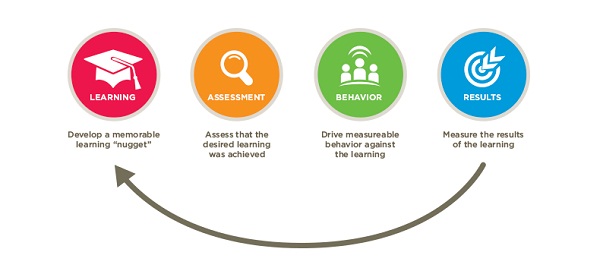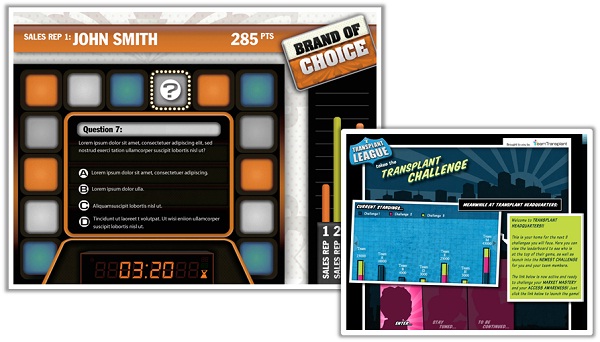Using mobile technology and gamification to empower pharma sales

Continuing the series on using digital tools for pharma sales force training, MXM Health looks at how mobile tools and gamification elements are becoming essential components of any effective internal learning program.
Continued from 'Training the pharma sales rep for a digital age'
In the first part of this series, we outlined how some of the digital techniques that have been adopted by the pharma industry for engaging with prescribers can also be put to good use when it comes to internal training of the sales team.
Historically, the pharma industry has relied on large-scale live training meetings, typically held once or twice per year, for up-skilling and motivating sales representatives. However, as the engagement skills in the digital age adapt and the product messaging becomes more specific in line with increasingly niche indications, we know that learning must be continual to be effective. For example, our studies show that up to 80% of the information learned during live meetings is forgotten within two weeks and, even when it is retained, imparted clinical knowledge needs to be constantly reinforced with appropriate sales skills.
"Mobile technology can play a valuable role in plugging this training leak"
Once the training meeting is over, the responsibility to help sales people retain such knowledge is often left to sales managers, who can lack the time and expertise to properly reinforce these lessons. It is here that mobile technology can play a valuable role in plugging this training leak, by using high-impact content to constantly reinforce what has been learned. In addition, novel engagement techniques such as gamification can also be employed to enhance the response and results from such remote skills development.
Technology enables remote learning to be highly personalized
Complementing live training sessions with mobile training is highly effective for a number of reasons. First, it can be delivered using the very devices that sales teams are using to engage with their customers – typically the iPad or equivalent tablet. Second, such interaction can be tracked just as easily as customer interactions, facilitating a 'big data' approach to learning. Finally, such data capture and the continual, but remote, nature of the training allows much greater personalization to the individual rep. Not surprisingly, these benefits also mimic those of digitally-enabled prescriber engagement.
This ability to tailor and track training, in a constant feedback loop, is the real strength of mobile learning and allows implementation of powerful learning processes, as outlined in figure 1.

Figure 1: Key steps in remote learning facilitated by modern mobile digital devices.
• Assessment: A series of brief questions are asked to ascertain uptake and retention of the content.
• Behavior: Specific changes in behavior are set as targets, based on the training.
• Results: Performance against the new targets is tracked and reported back, allowing central assessment and training adaptation, as required.
Gamification also enhances learning through competition
As human beings, most of us are, to some degree, driven by a desire to compete and achieve external recognition – a characteristic that tends to be prominent in top-performing sales representatives. Gamification can therefore also be a powerful tool in training, playing to those competitive instincts and introducing such emotive, human factors into the process of exploring and developing new skills.
"Gamification must begin with clear development objectives and instructional design, not technology and content"
The term is often inappropriately used though. Gamification, or 'EDU-gaming' as we sometimes call it, must blend those human factors with a clear and measurable commercial objective to avoid simply being a fun game. So while gamification is typically very engaging and visual at face value (see figure 2, for example), it is important that three aspects are clearly defined and implemented:
1. A clear task must be defined (the object of the game), which requires skills to complete that are relevant to the player's role in real life.
2. Rules and a scoring system should be in place that reward performance against that objective, through development of the appropriate skills.
3. Results should be immediately fed back and shared among peers (socialized) to encourage the competitive element.

Figure 2: Gamification is visual and fun, but should be designed to encourage skills development through competition with peers.
Putting digital learning techniques into practice
Clearly, incorporating such mobile and gamification techniques into training comes with a cost, but these are not just conceptual ideas – in practice they deliver tangible, measurable results that impact the bottom line for sales teams.
For example, one pharma company developed an 'oncology university', with monthly remote 'events' to support knowledge development for its US sales team. The resulting continuous in-flux of information from the field identified areas of need within the training curriculum, and drove live event training in a direction that was meaningful, validated, and based on competitive performance across regions. It became clear which skills and knowledge gaps differentiated top-performers from their peers and this information could be used to focus live training on the application activities needed to improve performance throughout the sales force.
Another organization utilized gamification techniques to develop a quiz game around the launch of a new product, with 440 representatives answering over 25,000 questions in just one week! Needless to say, this fun way of learning filtered through into performance, due to the incredibly effective feedback loop created via the level of data gleaned from this approach.
So while live training sessions will never be replaced entirely by remote interaction, perhaps it is time to ask whether external digital engagement techniques could do more to help develop your own teams?
The next part of the series, looking at factoring digital technology into live events, will be published next week.
About the author:
Todd has over 10 years of significant digital expertise and has implemented various integrated digital solutions across enterprise systems and for small specialty businesses with unique business models. As MXM's Digital Team Lead, Todd has a proven history of engaging client leadership, anticipating and understanding business and project needs, and maximizing delivery effectiveness of digital solutions.
MXM Health, part of the broader MXM group, is the premier agency in the health care training and marketing arena, offering full-service learning design and development solutions for the life sciences industry.
Todd Herman can be contacted at +1 248 246 5368 or via email at Todd.Herman@mxm.com.
For more information on MXM Health visit www.mxm-health.com.
How can mobile and gamification tools elevate your approach to sales training?











